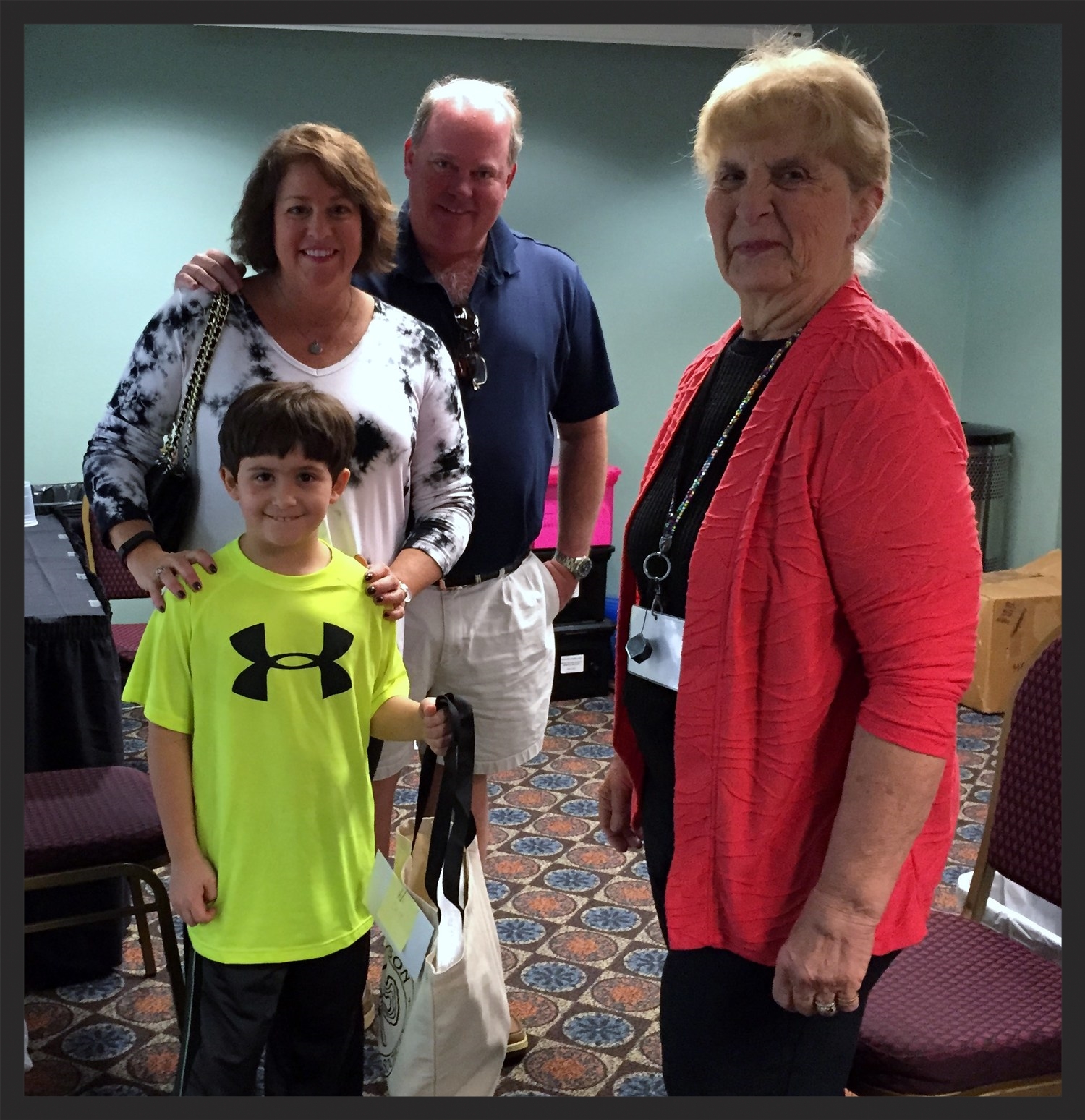Back in October of 2014, we received an email from Anne Cowin. In her email she told us that her nine year old son was VERY interested in "gems and minerals." She and her husband were going to surprise their young son for his birthday by flying from Alabama to Arizona just to attend the 2015 Tucson Gem and Mineral Show ®. As a matter of fact, it would be the first time for the entire family!
Diane meeting with Chip, along with his Mom & Dad.
Rose Marques, TGMS Executive Assistant, answered the initial email with as much information that she could give... days, times, what will be on exhibit, information on the Dealers and especially information on the Junior Education area. Rose told them that we would have tickets for them and something special for the "birthday boy!" They would be introduced to our President, Diane Braswell, who would meet with them and introduce them to the "greatest show on earth!" Armed with all of that, they were even more excited!
After a couple of email conversations with Diane and Rose, the plans were set for the Cowins to come to the TCC Show Office and meet with Diane. Once they arrived, she presented Chip with a "gift" bag from TGMS, wished him "Happy Birthday" and told him to have fun at the Show.
Chip beginning to look at some of the wonderful gifts that TGMS gave him for his birthday.
The following is from Chip in his own words:
“In my opinion the Tucson Gem and Mineral Show® is much better than Disney World! I like rocks and minerals ALOT and it makes it really fun! But then it was my birthday and I thought my parents were taking me to Disney World but then my parents showed up at school and checked me out and I didn’t know where I was going … but there was a taxi waiting and then my mom said where do you think you are going … and I saw the picture of the rock and mineral show and the ad my mom had printed ... and we headed to the airport - it was awesome!! My favorite parts of the gem and mineral show were the people who gave my mom, my dad and me free tickets to the show and a gift bag! I loved the college students that had experiments and gave out free rocks - and looking at rocks under a microscope. In my opinion the Tucson Rock and Mineral Show is better than Disney world! We purchased some very special things for my collection including a Megaladon Tooth! I really want to go back next year!!!”





















